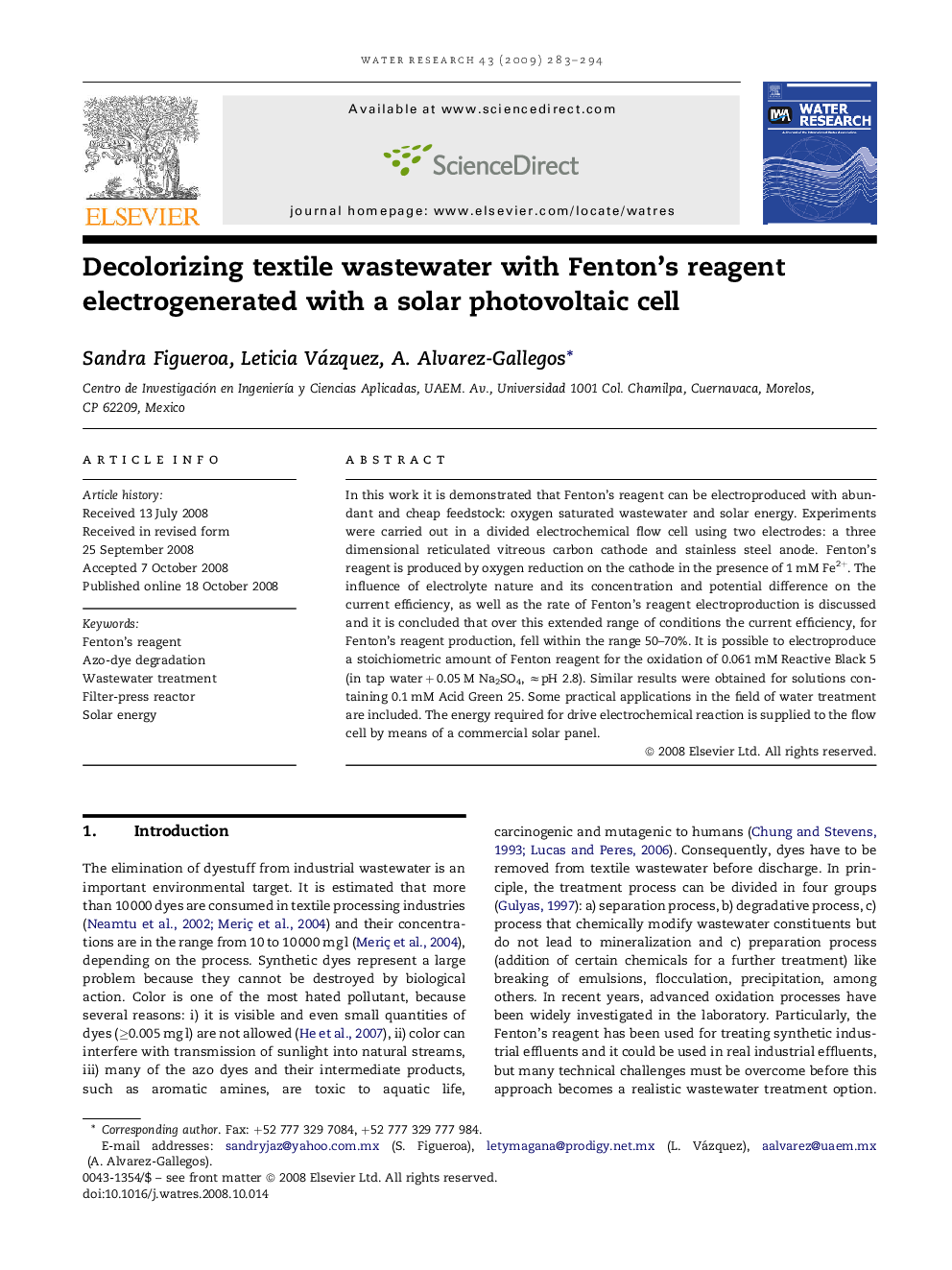| Article ID | Journal | Published Year | Pages | File Type |
|---|---|---|---|---|
| 4484427 | Water Research | 2009 | 12 Pages |
In this work it is demonstrated that Fenton's reagent can be electroproduced with abundant and cheap feedstock: oxygen saturated wastewater and solar energy. Experiments were carried out in a divided electrochemical flow cell using two electrodes: a three dimensional reticulated vitreous carbon cathode and stainless steel anode. Fenton's reagent is produced by oxygen reduction on the cathode in the presence of 1 mM Fe2+. The influence of electrolyte nature and its concentration and potential difference on the current efficiency, as well as the rate of Fenton's reagent electroproduction is discussed and it is concluded that over this extended range of conditions the current efficiency, for Fenton's reagent production, fell within the range 50–70%. It is possible to electroproduce a stoichiometric amount of Fenton reagent for the oxidation of 0.061 mM Reactive Black 5 (in tap water + 0.05 M Na2SO4, ≈pH 2.8). Similar results were obtained for solutions containing 0.1 mM Acid Green 25. Some practical applications in the field of water treatment are included. The energy required for drive electrochemical reaction is supplied to the flow cell by means of a commercial solar panel.
